Build A Full Online Business With Chatgpt's Help!
Last updated: Jul 30, 2023
The video is about how to build a full online business covering both the technical and marketing side with the help of AI and ChatGPT, specifically focusing on the idea of an email validation service.
This video by H-EDUCATE was published on Jul 18, 2023.
Video length: 18:28.
The video is about building a full online business with the help of AI and ChatGPT.
The specific idea discussed in the video is an email validation service business, where people pay on a monthly basis or buy credits to use the service. The video covers the technical side of building such a service, using AI and ChatGPT, as well as marketing strategies and scripts.
The video also mentions the option of buying a ready-made script for building the business, but the speaker does not prefer this approach.
- The video is about building a full online business with the help of AI and ChatGPT.
- The focus is on the idea of an email validation service.
- An email validation service validates target recipients' emails before sending a campaign.
- Three methods of building an email validation service are mentioned: buying a ready-made script, building from scratch, or using an existing platform.
- Various methods of monetizing an email validation service are discussed, such as charging per credit or offering subscription plans.
- Marketing strategies for promoting the service are shared, including creating a landing page, using social media, and offering discounts.
- Methods for building a user interface for an online tool are discussed, including building it yourself, hiring a developer, or using no-code tools.
- Email validation involves three levels: syntax validation, MX domain validation, and mailbox existence validation.
- Technical challenges in email validation are addressed, such as IP blacklisting and catch-all emails.
Build A Full Online Business With Chatgpt's Help! - YouTube
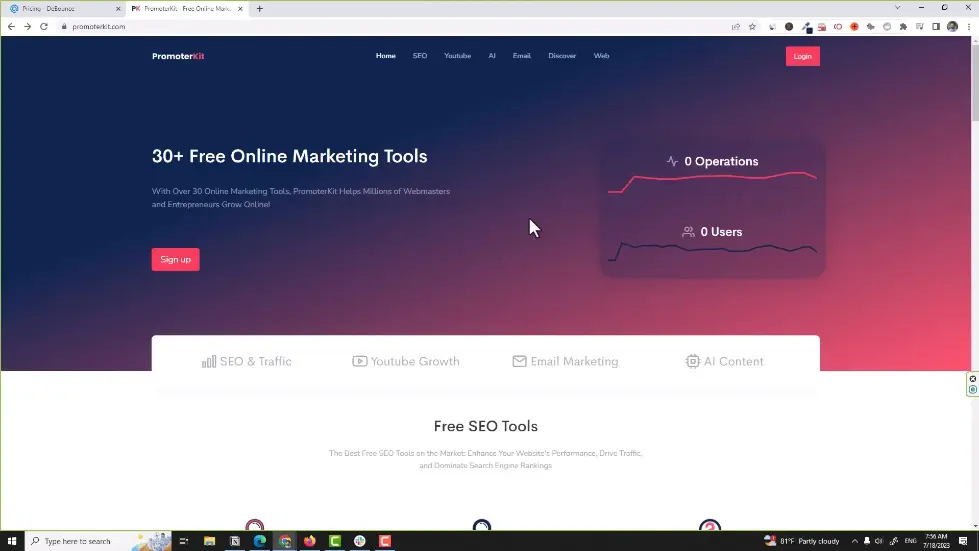
Section 1: Introduction
- The video is about building a full online business covering both the technical and marketing side with the help of AI and ChatGPT.
- The focus is on the idea of an email validation service.
- People will pay on a monthly basis or buy credits to use the service.
- Examples of email validation services are mentioned, such as The Balance and My Email Radiation software.

Section 2: What is an email validation service?
- An email validation service validates target recipients' emails before sending a campaign.
- It helps prevent sending emails to invalid addresses and losing sales.
- The video will teach how to build an email validation system for personal use or as a business.
- Picking a name for the business is discussed, with the option of using ChatGPT for ideas.
- A prompt template is provided to help generate domain or brand names.
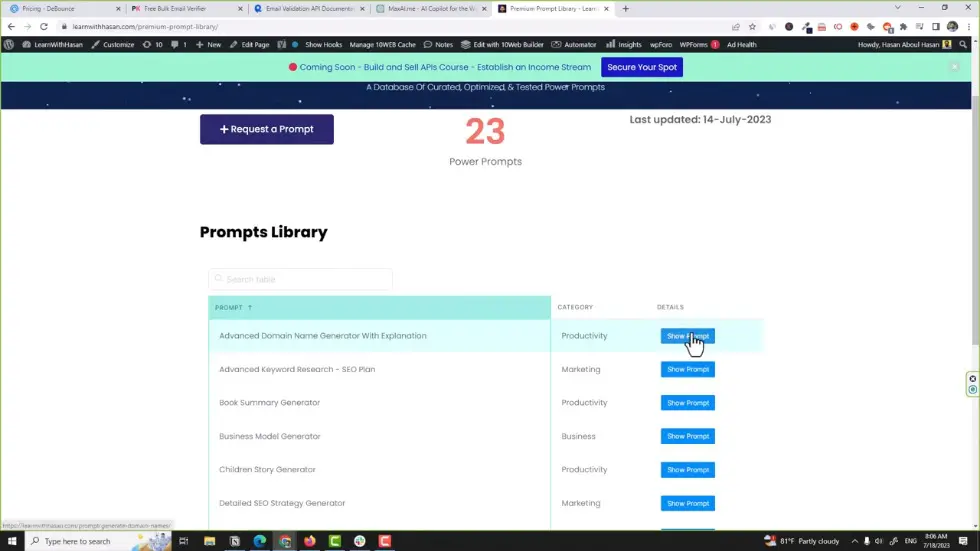
Section 3: How to build an email validation service
- Three methods are mentioned: buying a ready-made script, building from scratch, or using an existing platform.
- Buying a ready-made script, like the "Email Verifier Pro" on CodeCanyon, is the easiest approach.
- However, the speaker doesn't prefer this approach due to the complexity of the technical side.
- Building from scratch is another option, but it requires more technical knowledge.
- Using an existing platform, like Mailgun or ZeroBounce, is a recommended approach for beginners.
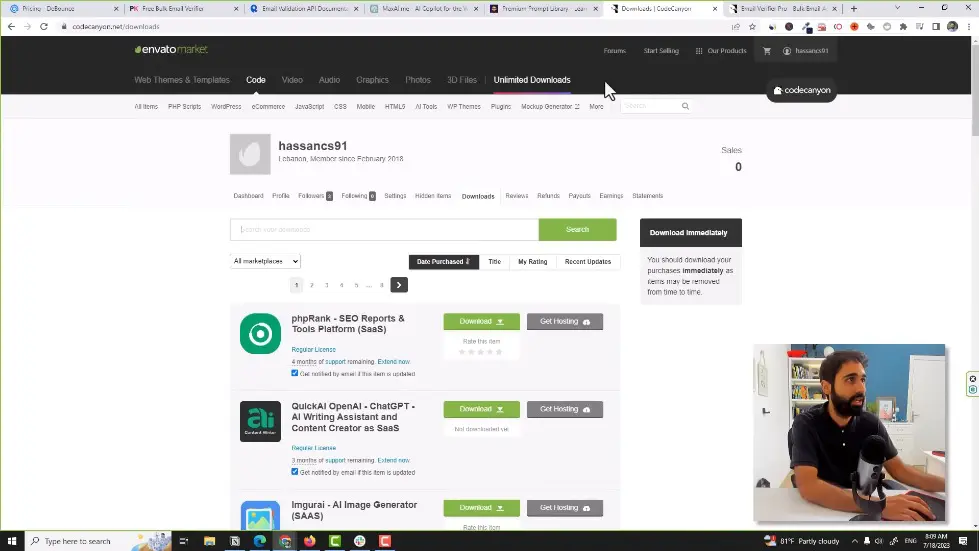
Build A Full Online Business With Chatgpt's Help! - YouTube
Section 4: Monetizing an email validation service
- Various methods of monetizing an email validation service are discussed, such as charging per credit or offering subscription plans.
- Marketing strategies for promoting the service are shared, including creating a landing page, using social media, and offering discounts.
- Scripts and tools for automating the service are mentioned, such as using Python and APIs.
- The importance of providing value and building trust with customers is emphasized.
- The video concludes by encouraging viewers to take action and start building their email validation service.
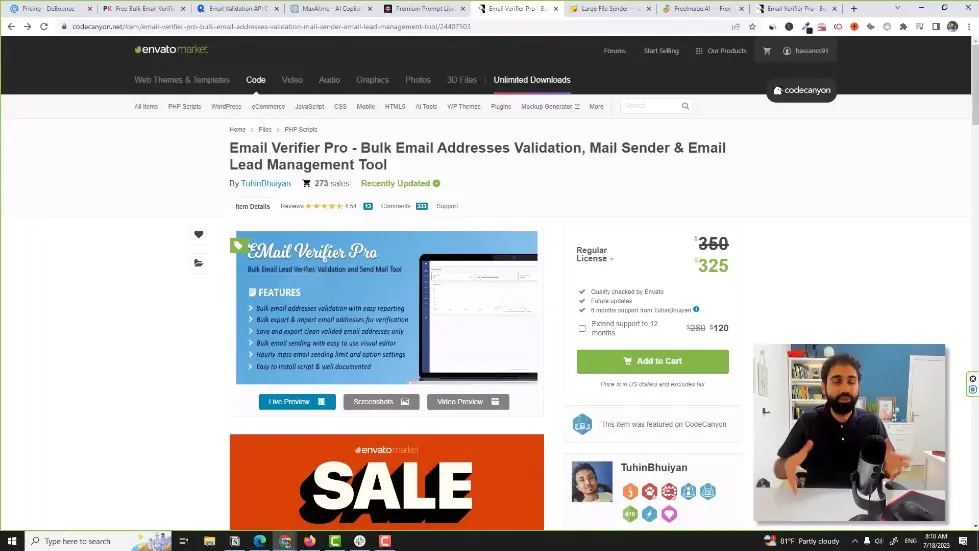
Method 1: Using a Technical Script
- Using a pre-built script like example large file sender or free image.ai to start a business.
- Rebranding the script and doing some styling and testing before using it.
- The main problem with this approach is the lack of support from the script's author.
- This method is more suitable for developers who understand the code and can provide support themselves.
- Not recommended for beginners due to the difficulty of providing support and updating the script.
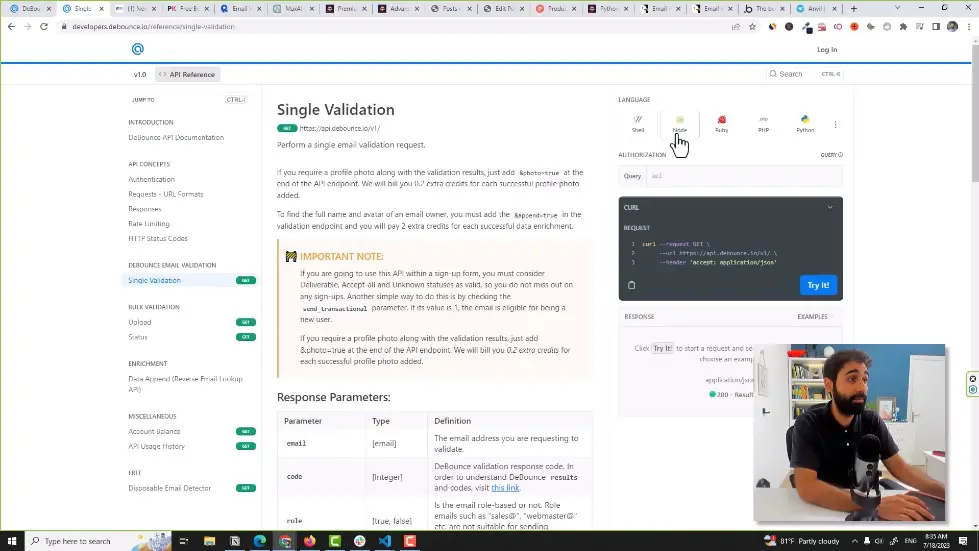
Method 2: Building a Validation Service on Top of an API
- Using an API like de-bounds to create a validation service with custom code.
- De-bounds provides excellent documentation and examples for different programming languages.
- The main challenge with this approach is the need to write some code.
- Charging PT can help generate code for different languages, saving time and effort.
- Using caching to reduce costs by storing validation results and avoiding unnecessary API calls.

Method 3: Building an Email Validation Service from Scratch
- The most advanced approach is to build the email validation service yourself.
- This method requires a deep understanding of programming and email validation techniques.
- Allows for complete customization and control over the service.
- Requires significant time and effort to develop and maintain.
- Recommended for experienced developers or those willing to invest in learning and development.

Monetization Options
- Building a SAS (Software as a Service) website similar to e-bounds or NeverBounce.
- Selling an API on platforms like Rapid API, where users can pay for monthly access to the service.
- Creating a simple script and publishing it on Rapid API to generate revenue.
- Consider offering a full course on building and monetizing email validation services.

Building a Free Tool for Email Validation
- Building a free tool like an email validation service can help build an email list.
- Offering a free tool can attract users to sign up and log in, allowing you to collect their email addresses.
- Creating a side project like a free tool can generate traction and traffic for your business.
- Free tools, especially online tools, can drive a lot of traffic and help reach a large audience.
- Banner ads can be sold or other products can be promoted on the free tool website.

Understanding Email Validation Levels
- Email validation involves three levels: syntax validation, MX domain validation, and mailbox existence validation.
- Syntax validation ensures that the email has the correct syntax, such as an @ sign and a domain name.
- MX domain validation checks if the domain has a mail Exchange Server listed in its DNS.
- Validating the existence of the target mailbox is the most complicated level, as it requires validating without sending emails.
- Implementing IP rotation and rate limiting can help avoid IP blacklisting when validating emails in bulk.
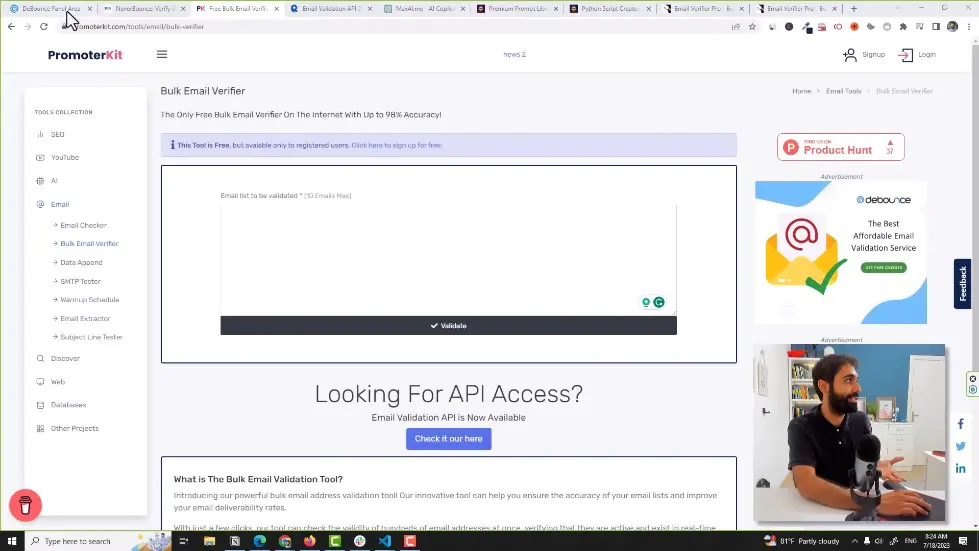
Technical Challenges in Email Validation
- Validating emails in bulk can lead to IP blacklisting, resulting in access denial or invalid results.
- Implementing IP rotation and rate limiting can help overcome IP blacklisting issues.
- Catch-all emails, where the server responds with a valid email even if it's not valid, pose challenges in email validation.
- Writing code from scratch is necessary to validate each level and implement technical requirements like multiple servers and IPs.
- A detailed guide with scripts, codes, and technical details will be provided for those interested in a deeper understanding.
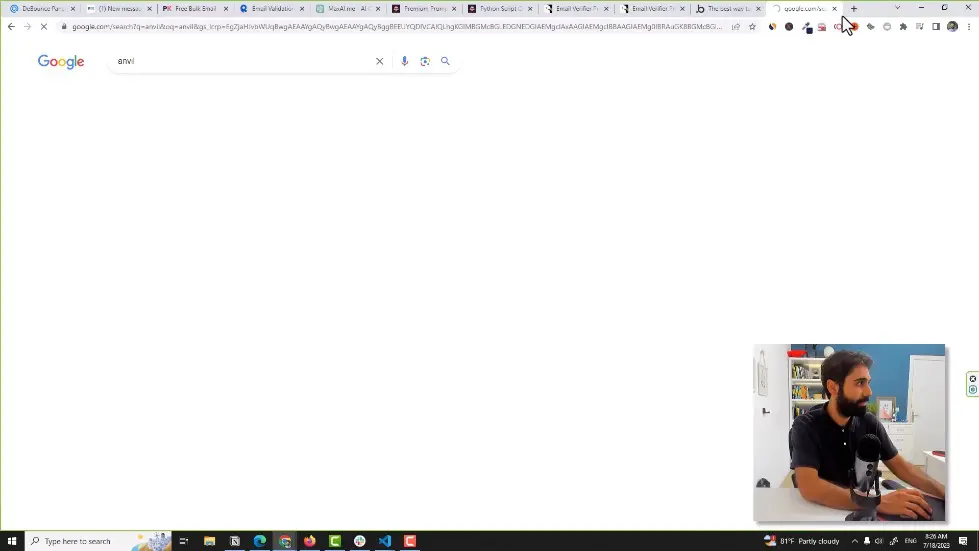
Building the User Interface for an Online Tool
- Four approaches to building a user interface for an online tool include building it yourself using front-end frameworks like React or Next JS.
- Hiring a developer is another option for building the user interface.
- No-code tools like Bubble.io and Framer can be used to build websites without coding.
- Semi-code tools like Anvil can also be utilized for building the user interface.
- A detailed guide will provide more information and recommendations on different tools for building the interface.

Section 1: Building an Online Business with ChatGPT
- Python scripting is a valuable skill that can help automate tasks and improve online business and marketing.
- There are four ways to build a user interface (UI) for your online business: using code, using no-code tools, hiring a developer, or building it yourself.
- Marketing your online business can be done through platforms like Product Hunt, where you can publish your service and gain exposure.
- Creating content on platforms like Twitter and Medium can also help promote your business.
- Implementing SEO techniques, such as using lean SEO and targeting specific keywords, is crucial for long-term success.
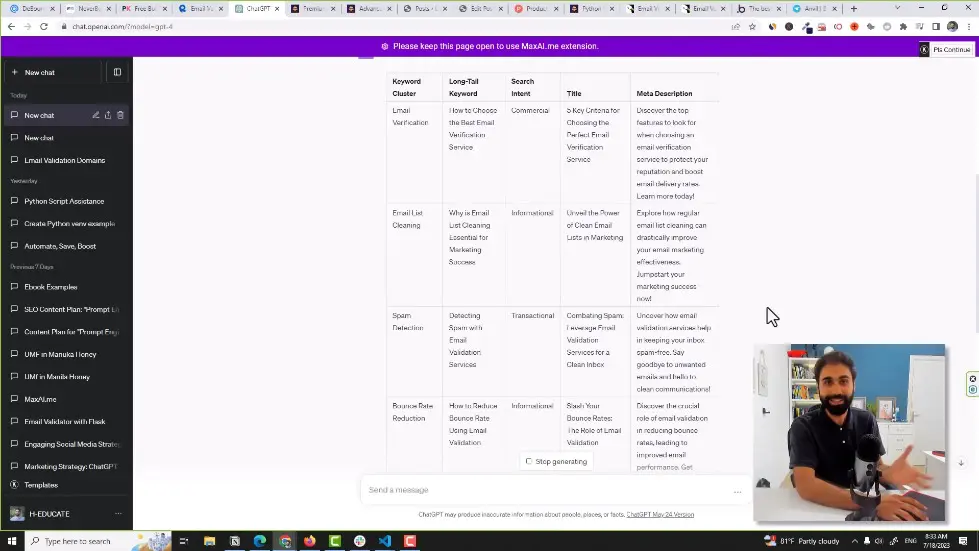
Section 2: Marketing and Launching Your Product
- Product Hunt is a platform where you can publish your service and gain exposure.
- Adding Product Hunt badges to your website can help people find and review your products.
- Creating content on platforms like Twitter and Medium can help promote your business.
- Implementing SEO techniques, such as using lean SEO and targeting specific keywords, is crucial for long-term success.
- Using ChatGPT, you can generate an advanced keyword research SEO plan to create an SEO strategy for your business.
Watch the video on YouTube:
Build A Full Online Business With Chatgpt's Help! - YouTube
Related summaries of videos:
- How I Got A 52.2% Email Open Rate With AI
- Go From Zero to $114,350 Using AI (Act Fast)
- How To Make Money Online Selling Prompts!
- Unbelievable! Create A Full Website in 60 Seconds With AI
- How To Make Money With Simple Excel Files ?
- 7 ChatGPT Prompts No One Is Talking About ?
- 6 Ways To Earn Money With Prompt Engineering
- One ChatGPT Prompt To Generate Anything!
- How To Create AI Tool In 2 Minutes Without Any Tech Skills
- How To Earn MONEY With Images (No Bullsh*t)
